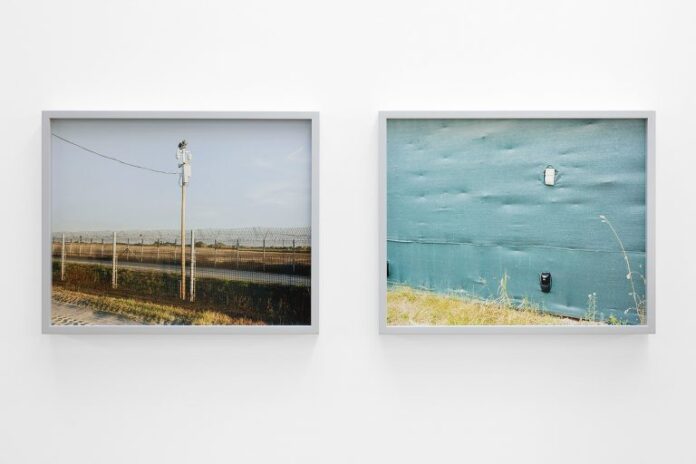On the ground among the animals is a research based artistic project exploring the possibility of a “visual ecocriticism.”
Over its course, Marina Caneve explores the ambiguities inherent in the dominating role played by human beings over nature and the tensions that emerge from their relationship with other animals.
The artist takes her cue from an analytical study of the Natura 2000 project, the network of ecological corridors built to preserve biodiversity promoted by the European Union. Caneve creates a visual link between the infrastructures connecting the wild animals, the videos generated by the monitoring systems and the nature reserve landscapes. She questions key themes such as migration and freedom of movement, non-human animal rights, ecosystem conservation and ultimately the possibility of rethinking human beings’ role in the world.
« [. . .] If you hadn’t been lying on the ground among the animals, you wouldn’t have been able to look up at the starry sky and you wouldn’t have run away. You might not even have survived the agony of getting up ». The title is a quote from Kafka’s Letters to Felice. This short sentence embodies the two actions that run through and determine Marina Caneve’s work: the need to change perspective ‘to look up at the starry sky’ and the need to get closer to the earth, in its symbolic value of being at one with nature, as well as in its questioning of humanity’s dominant position over other species.
Although formally rooted in a tradition that could be associated with documentary photography, Marina Caneve’s practice differs from it as for her, photography is not simply a means of documentation, but a research tool to research complex subjects, allowing her to reveal the incongruities of our times.
The exhibition at CAP – Centre d’art presents a new version of the project, featuring new prints from On the ground among the animals and a selection of the photographs exhibited at the FMAV/AGO Foundation in Modena in June 2024.
Marina Caneve presents the results of a project she has been working on for several years, based on the European Natura 2000 program. Established thirty-five years ago, this program promotes the preservation of biodiversity and the protection of a certain number of habitats and species in the member countries of the European Union, and is based on the construction of wildlife crossing devices.
The intuition to work on these spaces allows us to question the place of wild species in an environment where human action transforms and fragments—exploits and ravages—ecosystems.
The exhibition opens with a series of black and white images of wildlife crossing devices (bridges and pathways) built across Europe. Travelling across various parts of the continent, the artist has surveyed the places where these infrastructures are built, often located close to national borders, revealing ambiguities and contradictions.
As part of a vision of a “Europe without borders”, these bridges embody the symbolic link between countries working together for the environment, and reveal to what extent the natural environment is a political space where ecological thinking is present – or absent – from the public debate of each nation. The wildlife bridges also reveal the flaws in utopian thinking, where the principle of freedom of movement between countries clashes with their principle of sovereignty.
For the video installation presented in the exhibition, Caneve uses thermal cameras recordings collected by scientists near the crossing devices. Originally intended for border surveillance, this military equipment is still used today to monitor irregular entry into countries.
As the story unfolds, we also come across images that at first glance might recall a whole tradition of landscape photography. However, what Caneve chooses to show us are the remnants of a natural environment where animals appear furtive and where human activity is reflected through the presence of structures, objects and materials, designed to control, organize and monitor.
at CAP — Centre d’art de Saint-Fons, Lyon
until February 2, 2025

